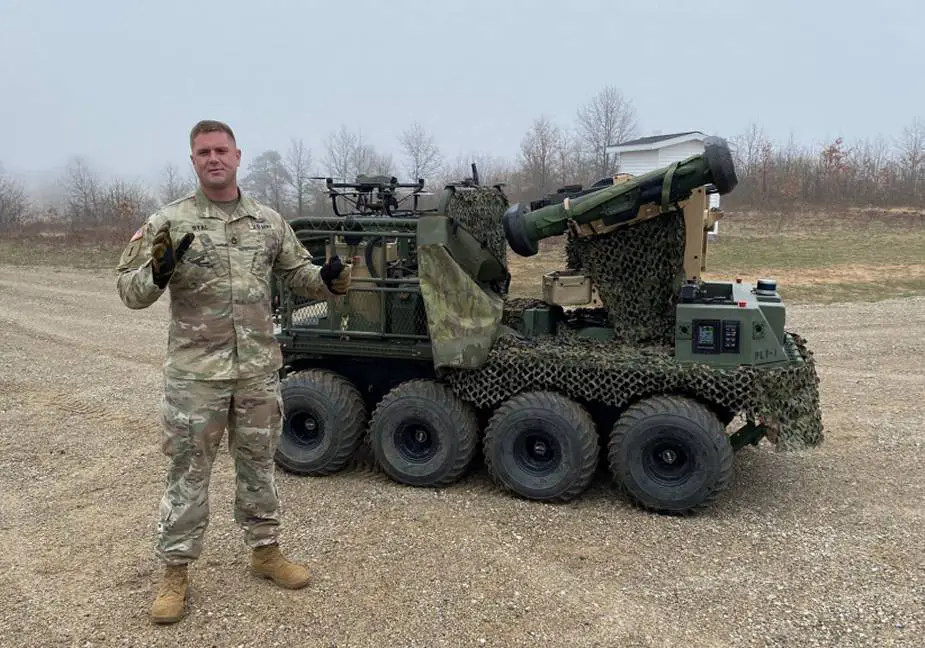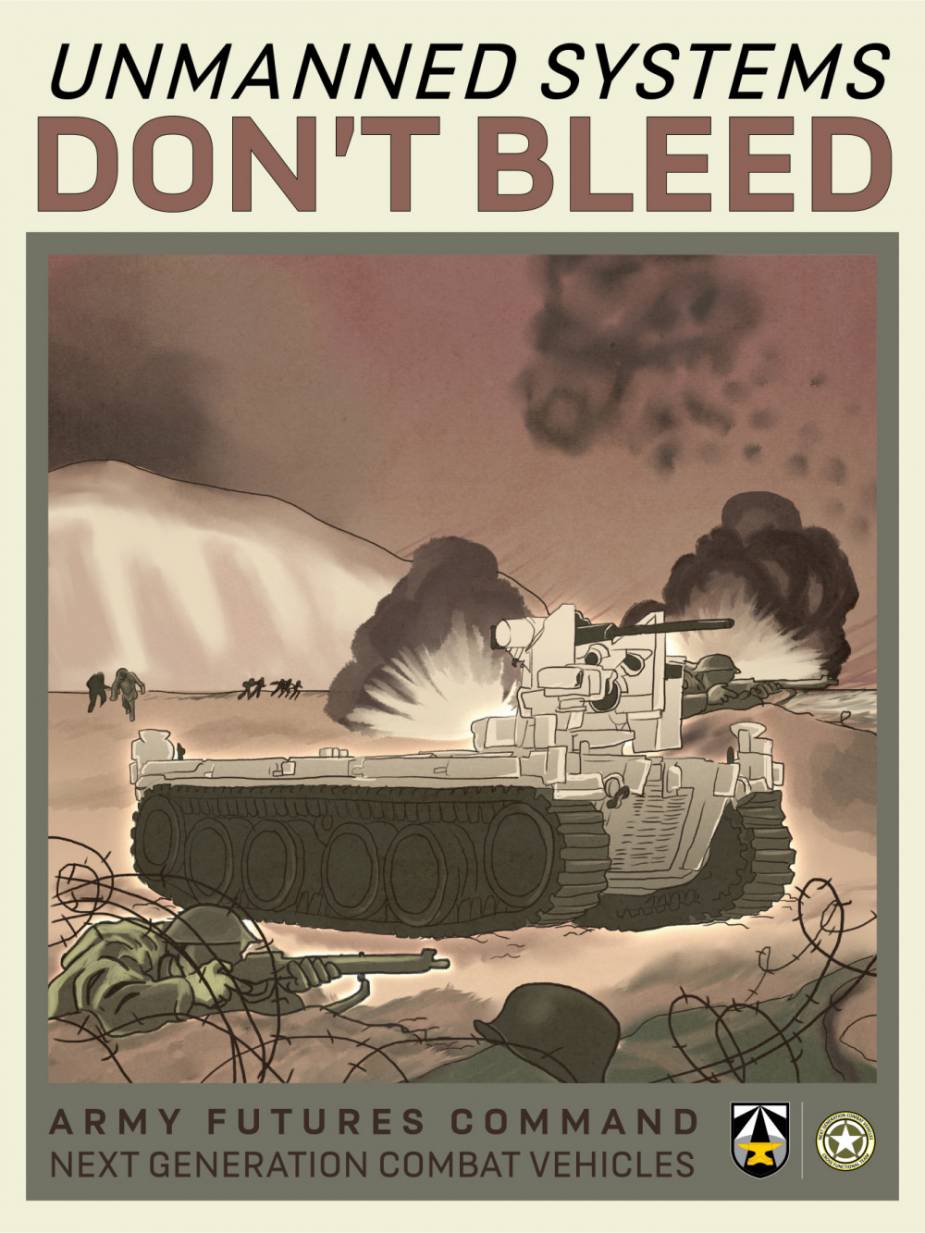Breaking news
Kongsberg to develop wireless lethality for US Army Light and Medium Robotic Combat Vehicles.
The U.S. Army has selected Kongsberg Defense & Aerospace to provide a wireless fire control capability to support its future medium-caliber lethality needs for its light and medium Robotic Combat Vehicles (RCV).
Follow Army Recognition on Google News at this link

Sgt. 1st Class Richard Dyal, A Company, 1-28th Infantry, 3rd Infantry Division, Fort Benning, Georgia, speaks about the additional level of lethality that Robotic Combat Vehicles can bring to light forces following a live-fire exercise at Camp Grayling, Michigan, April 28, 2021 (Picture source: U.S. Army)
This decision creates a common architecture across all current robotic lethality fire control for crew-served, medium caliber and anti-tank weapons. In addition to the fire control architectures for both RCV-Light (RCV-L) and RCV-Medium (RCV-M), Kongsberg weapon stations – CROWS J and MCT-30 respectively – have been selected as Government Furnished Equipment (GFE) for the Army’s RCV phase 2 experimentation.
“By overcoming the challenges presented by remote lethality, Kongsberg is paving the way for commonality across a variety of vehicle platforms – manned, optionally manned or unmanned,” said Scott Burk, vice president, Kongsberg Defense. “Beyond lethality and scalability, in conjunction with other Kongsberg medium-caliber systems and medium-weight systems being delivered, soldiers have the advantage of service-wide commonality. This will have tremendous positive impacts on training, provisioning and sustaining all U.S. Army weapon stations.”
This latest contract for wireless fire-control architecture augments previous awards to Kongsberg for the wireless fire-control architecture for the U.S. Army RCV-L program and the Multi-User, Multi-Station (MUMS) distributed fire-control architecture. The MUMS architecture was developed against a U.S. Marine Corps requirement for “one over many, many over one” control of RWS. The MUMS architecture is currently being applied to all Marine RWS deliveries including systems for the Amphibious Combat Vehicle (ACV).
Kongsberg demonstrated its wireless fire control capability for the RCV-L architecture, firing both a Javelin anti-tank guided missile (ATGM) as well as the weapon station’s 12.7 mm machine gun (.50 M2) from a legacy CROWS M153 mounted on an unmanned ground vehicle (UGV). The June 2019 live-fire demonstration was carried out at Redstone Test Center in Alabama. Kongsberg also successfully demonstrated secure transmissions of video and fire-control data including command signals over radio from the weapon station and the missile. Kongsberg will perform a similar U.S. government-sponsored demonstration of the medium caliber wireless capability later this year.
The Kongsberg MCT-30 is the first remotely operated turret to be qualified and fielded in the United States. The system provides highly accurate firepower for wheeled or tracked combat vehicles and is remotely controlled and operated from a protected position inside the vehicle compartment for optimized crew safety.
Kongsberg already delivered nearly 20,000 RWS units to more than 20 countries worldwide. Kongsberg is also the sole provider of RWS and remote turrets to the U.S. Army and U.S. Marine Corps. All RWS and remote turrets bound for U.S. customers are manufactured in the Kongsberg Johnstown, PA facility.



























